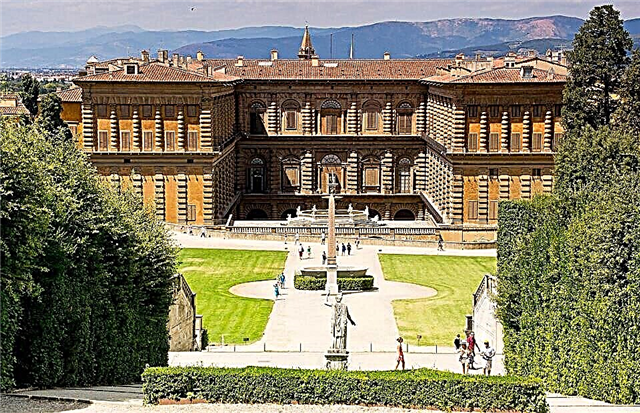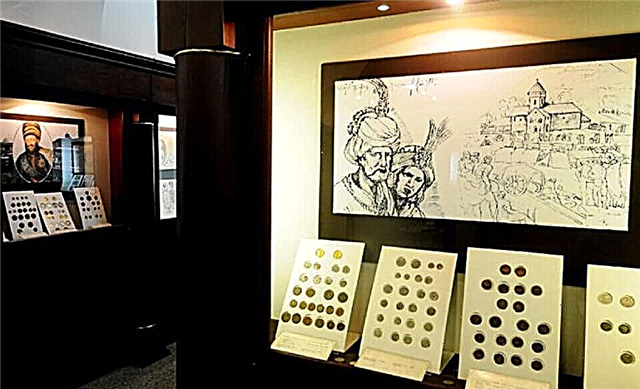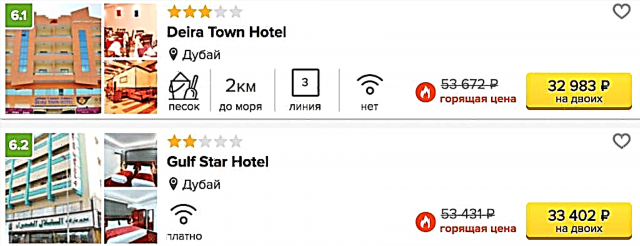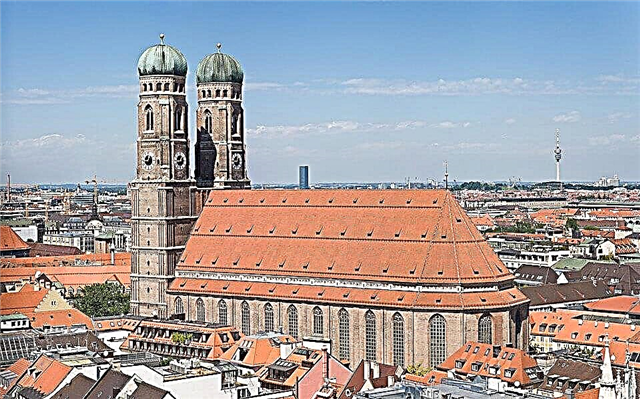The capital of Bavaria, the city of Munich, stretching along the banks of the Isar River near the Alps, embodies a unique collection of architectural and cultural values inherited from its rich history. The old center amazes with the sophistication of the facades of public buildings, the majesty of churches, the beauty of squares, monuments and fountains. Nearly one hundred museums showcase their artistic creations, historical artifacts and scientific achievements to visitors. If you are in the capital of Bavaria on a business trip or just passing through, it will not hurt you to know what to see in Munich in 1 day on your own. An overview of iconic landmarks will help you plan a tour of the city, where the old is harmoniously intertwined with the modern.
Nymphenburg palace

One of the main tourist sites of the city, to which thousands of visitors strive to see an architectural structure of amazing beauty and the highest historical value. In fact, this is a huge palace and park complex, which includes a galaxy of magnificent buildings; picturesque alleys, lawns, various reservoirs and a botanical garden. Spreading its possessions on hundreds of hectares, the complex can be called the German Versailles in terms of wealth and luxury of decoration.
Interior

The interior and exterior decoration of the main palace is a symbol of splendor, luxury and splendor. Everything here is striking in the scale of incredible wealth, from the front doors to the last exhibits of the inspection. The majestic architecture of the external decoration echoes in beauty and splendor with the luxurious splendor of the interior decoration of the palace rooms and state halls.
Ceremonial Hall

The main premises of the palace served as a venue for official receptions, festive balls and other court entertainments. The decoration of the walls and ceilings of the hall in the Bavarian Rococo style amazes the imagination with the elegance of stucco molding and the unusually lively beauty of the frescoes made by the best German painters of the 17th century.
Gallery of beauties

The gallery of beauties, created on the initiative of King Ludwig I, who was reputed to be a ladies' man, is a kind of collection of portraits of Bavarian beauties of different classes. The images of 36 ladies were captured by the famous court painter of the 19th century Karl Stieler, who began work on the next image after the personal choice of the king. The owners of charming female images had different social status: representatives of royal blood here side by side with a dancer from a shoemaker's family - Lola Montes.
This passionate adventurer, whom Ludwig was fond of, can be compared in the scale of cunning and dexterous blackmail with the famous Mata Hari. Lola was honored to become the prototype of the heroine of the famous Conandoilian story "Scandal in Bohemia".
Carriage museum

The Museum of Carriages, located in the premises of the former palace stables, is a unique collection of luxurious exit carriages, fiacras, phaetons, and sleighs. Each of the pieces presented here is a true work of carriage art in Bavaria: the extraordinary grace of the lines combined with the rich luxury of finishing is a genuine admiration. To view the entire complex, you need to devote more than one day to this.
German Museum

The building is located in the very center of the city on a museum island. It contains over 100 thousand copies of scientific and technical achievements from the Stone Age to modern technologies. Among the exhibits, many rarities and inventions of engineering are presented in kind. In the halls of the museum, the development of passenger and military transport, energy, medicine and household appliances can be traced. It is interesting to see the first computing machine, a dynamo, a submarine, the first car by Karl Benz and the first motor plane.
There is a Planetarium at the museum, in which sessions are held at 12.00 and 14.00 daily and at 16.00 on weekends, 2 observatories work. Tourists who climb to the observation deck, equipped on the top floor, discover the historic part of the city in all its glory. The museum is open for visits daily from 9.00 to 16.00.
Marienplatz square

The name of the main square - Marienplatz comes from the column of the Virgin Mary, erected in 1638 in honor of St. Mary, the patroness of the city, who protected it from the siege of the Swedes during the 30-year war. The tall marble column is crowned with a gilded bronze statue of the Blessed Virgin Mary with the Little Jesus. In her right hand she holds a scepter - a symbol of power.
The pedestal is surrounded by four bronze sculptures: a lion, a lizard, a dragon and a snake, symbolizing the punishments sent to people for their sins - war, plague, hunger and disbelief. The attention of tourists is attracted by the old Fischbrunnen fountain, towering in front of the central entrance to the New Town Hall. Restored after the Second World War, it consists of a pool, in the center of which a column rises, crowned with a bronze fish, and three sculptures of boys - butchers, sitting around the column pouring water from buckets.
There is a legend that by dropping a purse into the water of the fountain, it will attract prosperity and good luck. In the Middle Ages, knightly tournaments and public executions were held on this square, then it became a large food market, and now it serves as a platform for celebrations and a cult tourist site. The square can be reached by metro U3, U6 to the Marienplatz stop.
Old Town Hall

The historic building of the Old Town Hall, which has adorned Marienplatz with its late Gothic architecture since the 15th century, is called a masterpiece of architecture. It appears before our eyes in the form of a small fairytale castle with numerous turrets. Its snow-white façade bears the coat of arms of the Electors of the Wittelsbachs with the double-headed eagle of the German Empire.
The central façade is distinguished by the sculpture of Ludwig of Bavaria, a native of Bavaria who became the first chancellor of Germany. The interior of the festive hall is impressive with coats of arms on the walls, wall paintings and figures of dancers. A striking detail of the wood-paneled ceiling is the grand circular chandelier. If the town hall building has repeatedly changed its appearance due to rebuilding over 600 years, its tower, which rises to 56 meters, has remained unchanged since the 15th century after restoration. The tower attracts the eye with a lunar clock with zodiac signs along the perimeter, along which it is interesting to observe the phases of the moon.
The tower bell announces the time every half hour, and every day at 11.00 its fight lasts 3 minutes. Inside the tower is the property of a toy museum with a 200-year history collection. The Old Town Hall was the seat of the Bavarian Parliament, which moved to the newly built New Town Hall in 1874. Today celebrations, official receptions and concerts are held in its building. For free visits, it is open only on holidays.
New Town Hall

Unlike the late Gothic Old Town Hall, the Neo-Gothic New Town Hall adorns the opposite side of the Marienplatz. Its main "highlight" is the monumental tower 85 meters high. She delights with multi-stage domes and filigree trim similar to lace knitting. The clock that adorns the central façade makes a strong impression. With the chimes, 32 figures begin to move, showing scenes from the medieval life of Munich.
The beginning of each hour is announced by the sound of 43 bells. When night falls on the city, at exactly 22.00 hours they remind children that it's time to sleep, demonstrating how an angel, accompanied by a night guard, puts a child to bed.During the performance, the melodies of Brahms and Wagner are played by tower bells. Tourists usually stay here for a long time to admire the exquisite facade decoration with numerous neo-Gothic curls.
Frauenkirche

One of the visiting cards is called the Cathedral of the Most Holy Theotokos (Frauenkirche), located in the historic center near Marienplatz. This cathedral, shrouded in mystical legends, towered over the city by 100 meters, becoming the tallest building in Munich. The foundation stone of the temple took place in 1468, but the construction due to lack of finance was delayed for 50 years. There are legends that the devil himself interfered with the construction of the church and put forward a condition for the architect that the temple was without windows.
To this day, the imprint of the "devil's footprint" has remained on the church floor, and there is a tradition that the one who steps into it will be lucky. A feature of the architecture of the cathedral is called symmetrically standing 2 towers, crowned with small green onions with a cross. There are clocks on the towers, and one of them has an observation deck. You can admire the amazing panorama of ancient Munich from a height of one hundred meters from May 1 to October 31.
The church, majestic on the outside, but modest in the decor of the facade, amazes with its magnificence on the inside. You will see the marble cenotaph of Ludwig of Bavaria, many medieval sculptures in niches on opposite walls, an elaborately painted ceiling with biblical themes and a stunning altar. The cathedral can be visited from 7.00 to 18.00 daily. To experience its divine atmosphere, come to Mass at 9 o'clock in the morning.
Feldherrnhalle

The Feldherrnhalle, translated from German as "The Hall of the Bavarian Generals", can be found on the south side of the Odeonsplatz in the Maxvorstadt lane. It was built in the 1840s by order of King Louis I in honor of the Bavarian army. The model for the construction was the Loggia Lanzi in Florence. The structure is presented in the form of an arcade hall, 20 meters high. The history of the Bavarian army is reflected in a collection of monuments cast from cannons that have become battle trophies.
A stone staircase leads to the Hall of Generals, guarded by severe stone lions. The sculptures of lions are symbolic. A lion with an open mouth, facing the royal palace, says that one can argue with the monarch, and a lion with his head turned to the church with a closed mouth indicates that one cannot object to God. In the arches on both sides you are greeted by bronze sculptures of commanders: Count Tille and Prince Wrede.
Climbing the steps, you will come to the monument to the Bavarian army, which depicts a warrior in a Roman toga with a banner in his hands and a woman standing next to him. The most convenient way to get to the hall of the Bavarian generals is by metro on the lines U4, U5, U3 to the Odeonsplatz station. You can visit the attraction on any day except Wednesday.
Olympic park

Another beloved place in Munich is the Olympic Park, equipped to commemorate the victims of the 1972 Olympics. 11 of Israel's best athletes were then brutally killed by representatives of the Palestinian terrorist organization. The park, created on a sad occasion, has become the most grandiose complex of sports miraculous structures and evokes only positive emotions in everyone.
Against the background of an excellent water stadium, an original roof in the form of a huge plexiglass tent of a sports stadium rises. The famous Munich football team Bayern Munich used to train on it. The luxurious velodrome allows training and competitions on excellent tracks. There is a wonderful year-round skating rink where everyone can show off their skating skills.
The Olympic Tower amazes with its extraordinary height (290 meters) and amazing infrastructure. Climbing it, you can see stunning views of millennial Munich with its incredible beauties of the past and present. The graceful structure towering over the city - a symbolic object of the 1972 Olympics - can be safely called a masterpiece of high-rise construction.
Karlsplatz and Charles Gate

The square named after Elector Karl Theodor is one of the most authentic places in the Bavarian land, where the great history of its development from the Middle Ages to the present day has been embodied. Among the locals there is a second, unofficial name of the square - "Stachus" in honor of the old beer house located on it - a favorite hot spot of many Munich residents. The square surrounded by majestic buildings is always crowded with people. Many people come here to admire the magnificent fountain located in the center, to relax near the crystal jets that bring coolness. Karlsplatz is the heart of the tramway junction, from which you can go by tram to any part of the city.
A truly unique architectural monument of fortification construction (13-14 centuries) - Charles Gate (renamed in honor of Charles in 1791) Repeatedly destroyed, the reconstruction of the Charles Gate remains a symbol of the power and grandeur of one of the most expensive and highly developed cities in Germany. The majesty of the ancient gates, the solemn beauty of the entire grandiose structure, successful designer decorations are undoubted signs of an architectural masterpiece.
Marienhof

A kind of green oasis with velvety grass, surrounded by tight rows of trees - the amazing Marienhof square. A place of serene rest for townspeople and tourists, a cozy island of silence among the urban noise. In warm weather, you can lie on the grass carpet, sunbathe, read and just relax after a hard day. Archaeological excavations carried out on one of the sections of the square have revealed traces of early settlements (before the founding of the city).
The Marienhof square has become the object of historical research. Named in memory of the first Munich synagogue, the Marienhof, the square chronicles the history of Jews hiding from the brutal pogroms that took place in Europe in the early Middle Ages. They erected a synagogue here, in which they hid from a punishing death. This is probably why the green space of pl. The Marienhof was left undeveloped as a symbol of rebirth and eternity.
Viktualienmarkt market

Bavaria is known all over the world for its gastronomic delights and breweries, the famous Oktoberfest, so it is no coincidence that Munich is home to a symbol of the diverse abundance of everything edible - the Viktualienmarkt market. The bright palette of shelves bursting with delicious delicacies, vegetables and fruits amazes the most sophisticated customers with its assortment. Here you can satisfy any consumer demand, taste popular Bavarian sausages, which is called "hot, hot", drink fresh beer from a barrel, buy exotic fruits.
All products sold here are of high quality and freshness - mainly from Bavarian farmers who compete with each other for the best quality of the products produced. On the shelves you will not see tubers and root crops with clods of earth - everything is thoroughly washed, vegetables in wicker baskets look like a colorful still life of an art canvas in a sort of “gastronomic museum”.
Old Pinakothek

The Old Pinakothek in the Maxvorstadt area is considered one of the largest art galleries in the world. The name Pinakothek, which means "a collection of paintings" in ancient Greek, was given by Ludwig I, by whose will it was created. The case of the creator of the gallery was taken up by the rulers of Bavaria who followed him. Today, in the collection of many thousands of the art museum, 19 halls and 47 rooms are allocated for the permanent exhibition, in which 700 paintings are exhibited.
If you are going to get acquainted with the artistic masterpieces of the Pinakothek, then on the first floor of the building, on the right side, there are German and Flemish painters and sculptors who worked from the 14th to the 18th centuries.The most famous of the German masters - Dürer, Bruegel and Cranach - admire, and Flemish painting attracts with invaluable creations of Van Dyck and Jordaens. Here you get a chance to see the most famous painting by Rubens "The Last Judgment" measuring 6 meters by 4.6 meters and all of his 72 paintings, displayed in 4 halls.
In the right wing of the 2nd floor, you can enjoy the immortal masterpieces of the geniuses of the Italian Renaissance: Leonardo da Vinci, Perugino, Raphael, Titian and Botticelli, Italian and French paintings by Baroque and Rococo painters. And this is not a complete list of famous artists, whose work can be found in the Old Pinakothek. The gallery is open to visitors all days of the week except Monday. You can get there by underground: on the U2 line to the Königsplatz station, on the U3,4,5 or U6 lines to the Odeonsplatz station.
New Pinakothek

The New Pinakothek is the name of the Munich Museum of Fine Arts, which opened in 1853 opposite the Old Pinakothek. It contains a collection of painting, graphics, architecture and design from the end of the 18th to the beginning of the 20th century. The museum halls exhibit 400 masterpieces of European fine art from the period "From Goya to Picasso". In total, the collection includes up to 3000 paintings and 300 sculptures.
The main asset of the Pinakothek is considered to be 5 paintings by Francisco de Goya, executed in the classical style. Here it is possible to get acquainted with the best creations of German and French masters who worked in the classical and romantic genres. An impressive part of the exhibition belongs to German and French Impressionists, Cubists and Expressionists, among whom you will see the world famous paintings by Degas, Monet, Gauguin, Van Gogh, Renoir, Cezanne and Manet.
Lovers of modernism and symbolism will also not be disappointed by the collection of paintings, among which are the famous Stuk and Malevich. Among the sculptures on display, the statues of Rodin, Maillol and Picasso are considered especially valuable. The building is now closed for reconstruction presumably until 2025. The best works from the museum fund are exhibited on the 1st floor of the left wing of the Old Pinakothek. You can watch them: Monday, Thursday - Sunday from 10.00 to 18.00, on Wednesday until 20.00.
Pinakothek of modernity

The Pinakothek of Modernity is called the Museum of Contemporary Art of the XX and XXI centuries. It contains 20 thousand exhibits of fine, decorative and applied and constructive art, as well as modern digital technologies. The masterpieces of contemporary art have found their place in a purpose-built modernist-style building made of glass and concrete with a huge two-story rotunda in the center, from which 2 wings extend.
The domed rotunda reaches 30 meters in diameter and rises to 25 meters. The Pinakothek covers an area of 20,000 square meters and is the largest gallery of contemporary art in Europe. Rather, the Pinakothek of our time is 4 independent museums located under one roof. The ground floor houses more than 100,000 design items collected over 100 years, among which the development of furniture is of particular interest. A collection of jewelry is displayed in the rotunda. On the 1st floor there are exhibits of the museums of Graphics and Architecture.
The second floor exhibits an extensive collection of contemporary art, where post-impressionism and avant-gardeism of the first third of the 20th century are widely represented. Here you will see the works of Matisse, Picasso, Dali and other outstanding masters of the brush. The Pinakothek of Modernity can be visited: on Tuesday, Wednesday, Friday, Saturday and Sunday from 10.00 to 18.00, on Thursdays from 10.00 to 20.00. The most convenient way to get to the Museum of Modernity is to take trams # 27, 28 to the “Pinakotheken” stop. Then cross Theresienstraße and walk 100 meters along Barer Straße along the tram lines.
English garden

A remarkably picturesque park in the center of the Bavarian capital - the English Garden is very popular with Munich residents. They stroll in shady alleys, ride horses, play board games, and even surf in local waters. There are excellent conditions for an active and relaxing holiday. In a very cute Japanese garden in a charming teahouse you can enjoy a tea ceremony, in a cozy beer garden - treat yourself to the famous Bavarian beer. There is also a small nudist meadow in the park - don't be surprised if you see naked people here in the summer. The English Garden is a man-made landscape miracle, a green oasis among the concrete and stone of a big city.
Even one day of stay in this city will give an unforgettable experience, generously enriching the spiritual and moral world of any tourist who has visited the sights.











